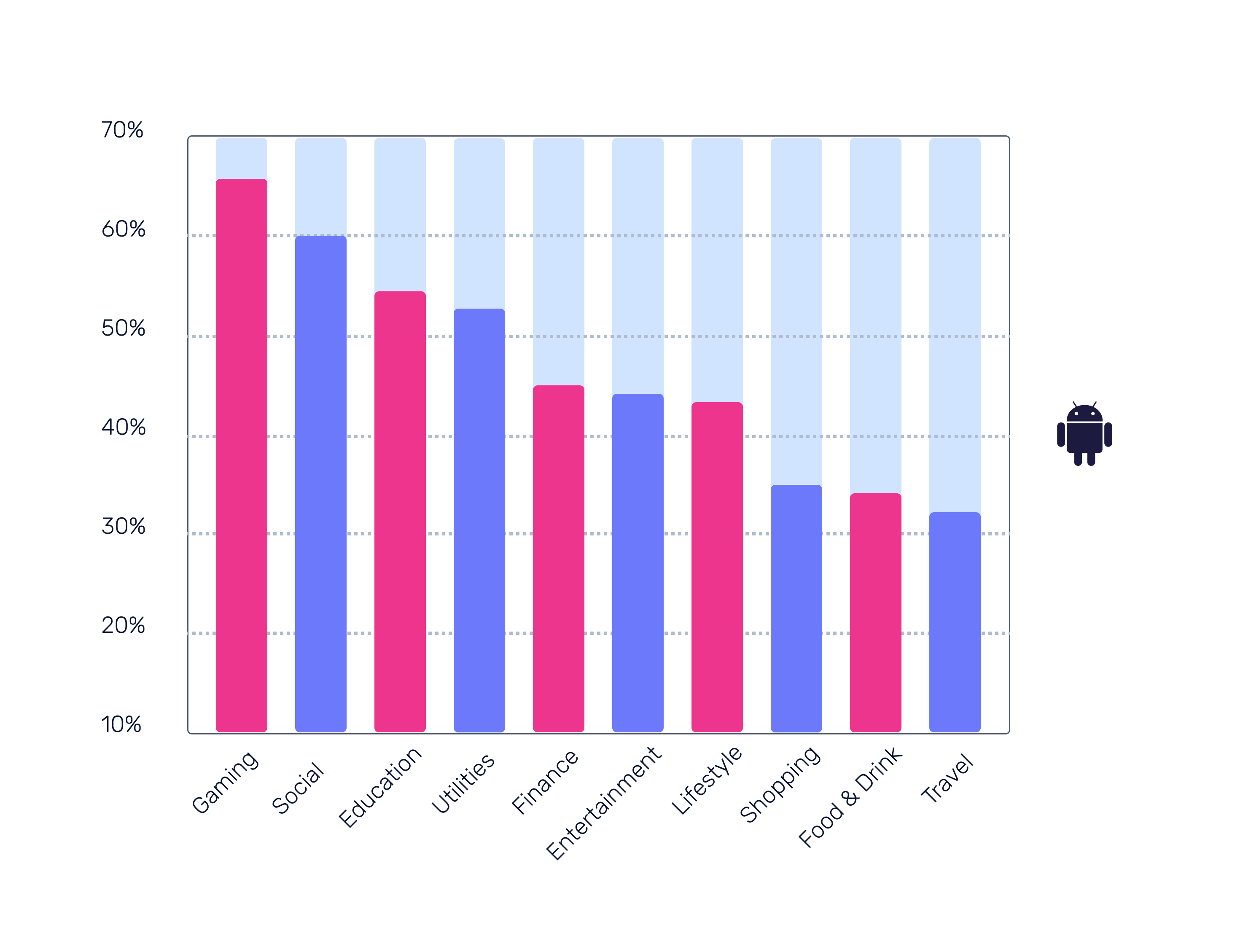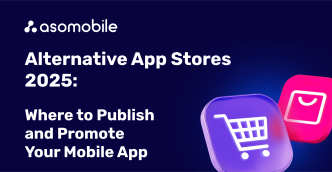Uninstall rate of mobile apps and how to reduce it?
Our new investigation will uncover the answer to the question - how to reduce uninstall rate of mobile apps? Uninstalling or deleting mobile apps is a process we always deal with. The reasons for it may be different:
- high level of competition in the mobile market
- high user expectations
- errors and the app not working properly
- just the disappearance of the reason that caused the installation of an app
Let's remember how often we start life on Monday (from the next week, month, or lunar eclipse) and install a tracker of good habits, affirmations, or something else that will serve as a tool for us on the way to a new Self. And after a while, we find these applications with a reminder of the operating system - they say they have not been used for a long time, and we delete them (as a result of the failure of our next attempt to acquire valuable skills or lose weight by the summer). This is one scenario. Or it can be the opposite - we are actively trying to use the apps for their intended purpose, but it was not there. A mountain of advertising that blocks the interface and essential details beggars to leave a review without understanding what is happening or even a complete breaking of what was promised.
The lyrical digression is over, and let's see what role the level of its deletions plays in the application's life cycle and how to avoid it.
According to AppsFlyer - about 49% of apps within 30 days after installation, and half of these deletions occur on the first day. Game applications are removed the most; travel applications are the least.
Geography of removals from AppsFlyer for October 2022:


According to AppsFlyer's report, we see games, social apps, and educational apps being most at risk of being removed. But one way or another, uninstall is a reality of any app, so let's look at what this says about the sites on which this application is presented and how we can take this fact into account when building our ASO strategy.
Uninstall rate for an app store
This is that flag that appears when analyzing the ratio of indicators of the level of installations and the level of deletions. When an app is downloaded many times and then deleted with the same frightening frequency, this is a bad sign. This means that the user, having installed the application, encountered a pessimistic UI or UX with a complete discrepancy between his own expectations and what was read on the application page in the store. For app marketplaces, this is one of the reasons why our app can be alarming and considered low quality.
For app stores, there is nothing more important than offering users high-quality and relevant applications and games to their expectations. This is not surprising because it is the primary source of income for developers and sites where games and applications are hosted.
The uninstall rate for ASO optimization
Stop, we can say, what does optimization have to do with problems inside the application - the app was indexed, the user installed it, and the job was done, but no! The level of app uninstalls cancels out all our efforts and levels out all the benefits that we received by optimizing the text and visual elements. That is why the cyclical nature of ASO processes includes analyzing the crash level and uninstalling the protected game or application.
At this point, you need to clearly understand that the number of downloads suddenly becomes unimportant because there is a pessimization on the part of the store itself. As mentioned, stores do not want to promote and offer low-quality applications. And users will pour bad ratings and reviews from themselves.
The level of uninstallations is directly proportional to the drop in rating.
Dominoes - that's what comes to mind with this formulation. The level of installations is growing ⇒ The internal inconsistency of the application with user expectations leads to uninstallation ⇒ The number of uninstalls drops the rating, as they will definitely let us know about dissatisfaction with what is happening (remember, users share more negative than positive) ⇒ the number of negative reviews is growing ⇒ new users see this and do not install our application.
How to track the level of uninstallations and errors?
Google Play and the App Store approach this differently. You need to install the appropriate SDKs to track the deletion of Android and iOS apps.
We know that the Google Play Console and the Android Vitals section are Google initiatives to improve app stability and performance for Android apps.
We can see the whole picture - crashes, errors, permission restrictions. And starting in 2017, these technical factors also act as factors in evaluating the app's work from the store's side. You can read more about Android Vitals here.
For iOS apps, we can also take advantage of the analytical capabilities of App Analytics from App Store Connect.
Uninstall tracking, especially for iOS apps, is a conflict between analytics for developers and privacy for users. Previously (up to version 15 of iOS), tracking the presence of an app on a user's phone was done using system notifications. The user did not even notice them, and the feedback to this notification made it clear to the developer that the application was still installed. With the new rules, after iOS 15, this feature was disabled, so the issue of tracking app removals remains open.
How to deal with the app uninstall rate?
- Monitor and measure.
Yes, it can happen to anyone, but this is an alarming sign as it has already become apparent. That is why it is worth constantly measuring the level of removals, monitoring the dynamics, and reacting at the slightest out of range of this indicator.
- The first day is the most critical.
As we have seen from the statistics, if we have a mobile game or social network application, the threat of uninstallation is most significant on the first day after installation. First impressions are what you need to look out for in the fight for low uninstalling. We need to make the first acquaintance with the app as attractive, understandable, and valuable for the user as possible.
- Balance in the promised and fulfilled.
When we promise the user a lot on the application page, lure him with a pleasant visual component and promising focus inscriptions; then we can outplay ourselves. The installation will happen, but the user, not finding what was promised, will disappointedly delete the applications after the first use.
- User interaction.
A constant reminder of yourself, using all possible channels (push-up alerts, email, social networks, and targeted advertising), will help the user not to forget about the application. From our side, it is only necessary to make the reminder process as correct, timely, and not overloaded as possible.
- Feedback.
We listen to our users because it is they who determine whether we have succeeded in our plans or not. Responding to reviews is not just a part of working with a reputation but a part of working to improve our product.
- Target users.
The more users, the fewer users. When we set up our strategy and tactics for attracting new users, we sometimes miss the word targeted. Our app needs those users who need our app. It is then that the removal process due to uselessness will concern our app the least.
- The user journey is the path to success.
Track user behavior to understand when, how, and why they stop using the application or delete it altogether. One of the steps of an integrated approach is reducing deletions.
- A quality app.
Much of what has been written earlier can be crossed off the list of concerns. After all, if a user installed it not by mistake or a false promise but in order to solve his own problems, he will most likely remain an active user for a long time.
 Українська
Українська  Русский
Русский  Español
Español 






